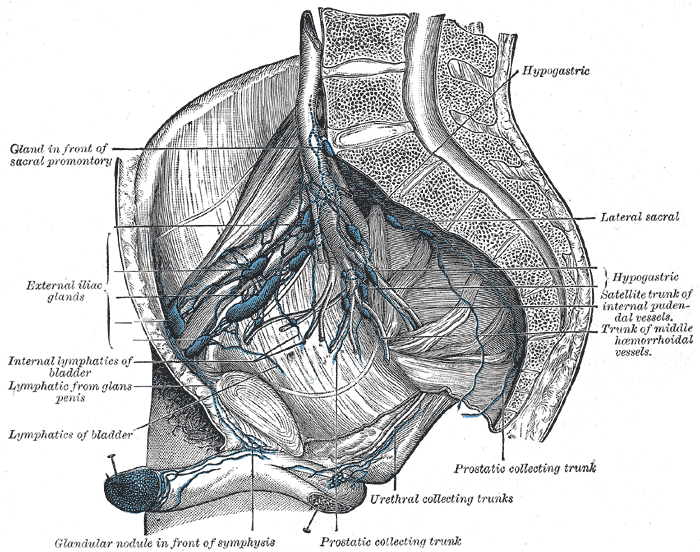Lateral sacral artery: Difference between revisions
m Robot: Automated text replacement (-{{SIB}} + & -{{EH}} + & -{{EJ}} + & -{{Editor Help}} + & -{{Editor Join}} +) |
m Robot: Automated text replacement (-{{WikiDoc Cardiology Network Infobox}} +, -<references /> +{{reflist|2}}, -{{reflist}} +{{reflist|2}}) |
||
| Line 17: | Line 17: | ||
DorlandsSuf = 12155741 | | DorlandsSuf = 12155741 | | ||
}} | }} | ||
{{CMG}} | {{CMG}} | ||
Latest revision as of 19:02, 4 September 2012
Editor-In-Chief: C. Michael Gibson, M.S., M.D. [1]
The lateral sacral arteries arise from the posterior division of the internal iliac artery; there are usually two, a superior and an inferior.
Superior
The superior, of large size, passes medialward, and, after anastomosing with branches from the middle sacral, enters the first or second anterior sacral foramen, supplies branches to the contents of the sacral canal, and, escaping by the corresponding posterior sacral foramen, is distributed to the skin and muscles on the dorsum of the sacrum, anastomosing with the superior gluteal.
Inferior
The inferior runs obliquely across the front of the piriformis and the sacral nerves to the medial side of the anterior sacral foramina, descends on the front of the sacrum, and anastomoses over the coccyx with the middle sacral and opposite lateral sacral artery.
In its course it gives off branches, which enter the anterior sacral foramina; these, after supplying the contents of the sacral canal, escapes by the posterior sacral foramina, and are distributed to the muscles and skin on the dorsal surface of the sacrum, anastomosing with the gluteal arteries.
See also
Additional images
-
Iliopelvic glands (lateral view).
External links
- Template:SUNYAnatomyLabs - "The Female Pelvis: Branches of Internal Iliac Artery"
- Template:EMedicineDictionary
